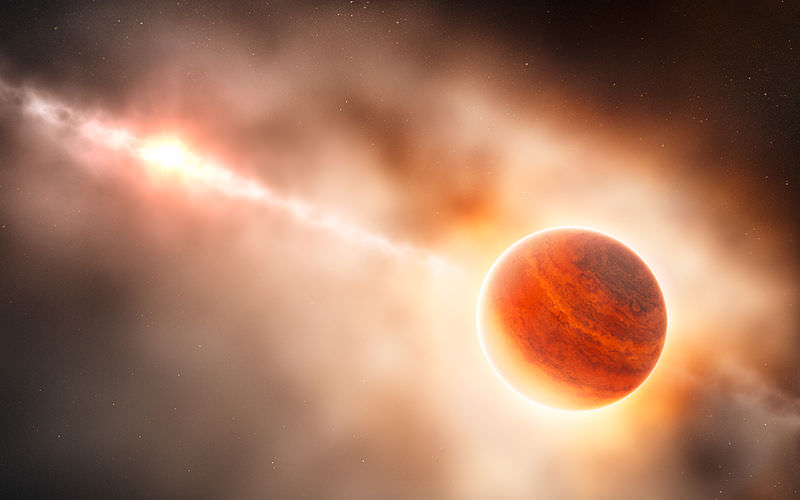A new study has shown that in order to grow more than one giant planet in the same solar system, the planets must go through a complicated and intricate dance to prevent one from destroying the other.
Planets grow from tiny seeds of rock and ice. In the initial stages of planetary formation, astronomers believe that the seeds simply merge and glue together through countless small interactions. But something different has to happen to get to the enormous sizes of the giant planets like Jupiter and Saturn in our own solar system.
That’s because as the star in the center of a growing planetary system begins to wake up, it can send out bursts of high energy radiation and strong winds of particles that can blow away all the material that the planets need to build themselves. So planet formation has to happen relatively quickly.
Astronomers believe that this rapid growth phase happens through instabilities that develop in the disk of gas and dust that surrounds young stars. After a certain critical point is reached, large planets can simply vacuum up tremendous quantities of material before it gets blown away. But this relatively simple picture doesn’t fully explain how two or more giant plants can grow together. How does one planet prevent the other from sucking up all the gas?
That is the subject of research of a new article that recently appeared in the journal reprint arXiv. The astronomers behind the study performed simulations of growing planetary systems with at least two gas giants to see what conditions had to be met to get both planets as big as possible.
They found that in order to get at least two giant planets in the same system, they had to maintain a strict feeding schedule. If the planets happen to start their rapid accretion phase at the same time, they tend to end up with similar masses. And even if one planet is delayed a little bit after the other in its growth phase, it can still catch up in less than 100,000 years.
But the diversity of giant planets that we see in our own solar system and in exoplanets around the galaxy reveals huge disparities in their masses. For example, in our own solar system Jupiter is three times more massive than Saturn.
To get these large differences in masses, the food supply must be cut off relatively soon. The astronomers behind the study estimate that once two giant planets start growing, if the gas gets blown away in less than half a million years, then the smaller planet doesn’t have enough time to catch up in mass to the bigger one, and their sizes remain locked.
This research provides an important step in understanding the complex and rich history of not only our own solar system, but of systems throughout the galaxy.

